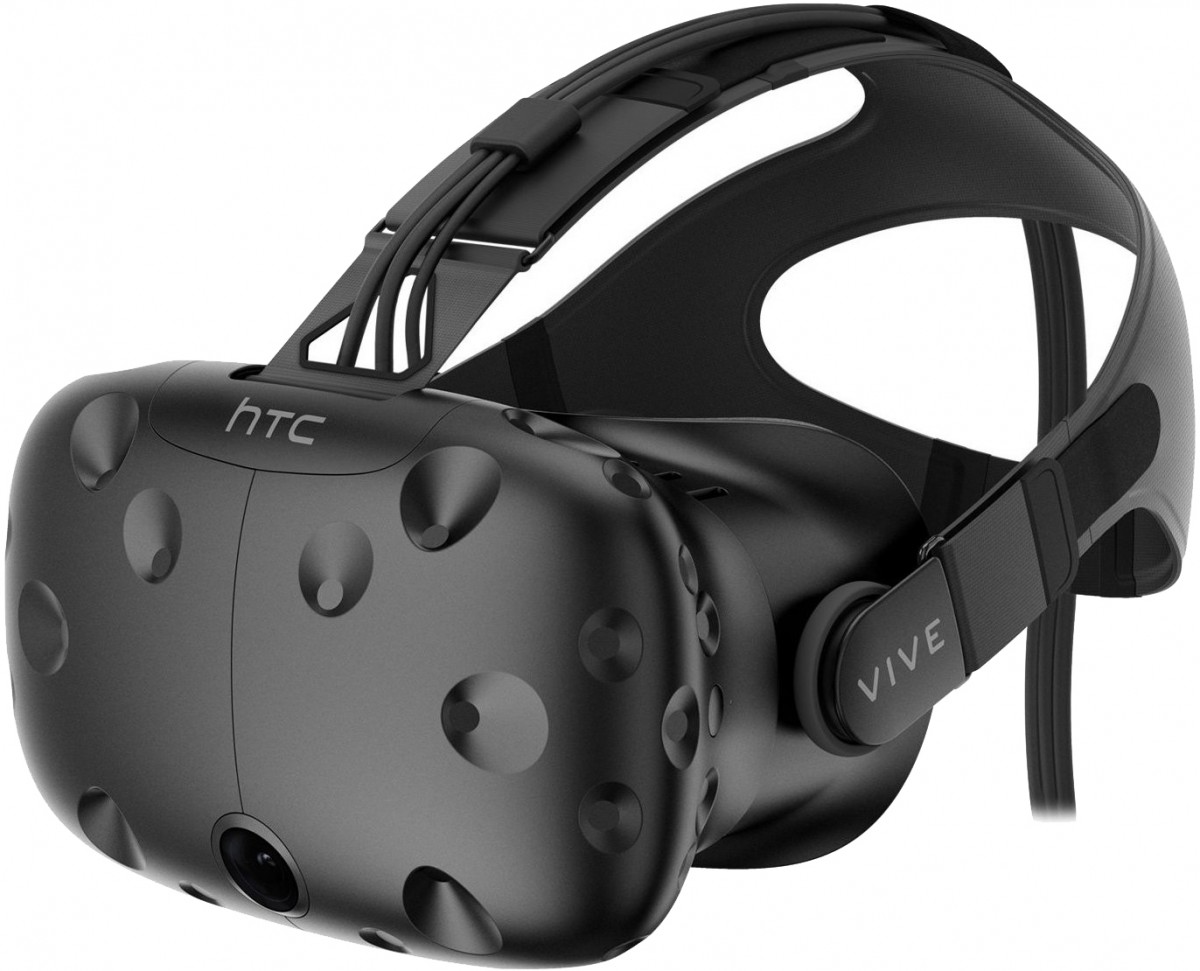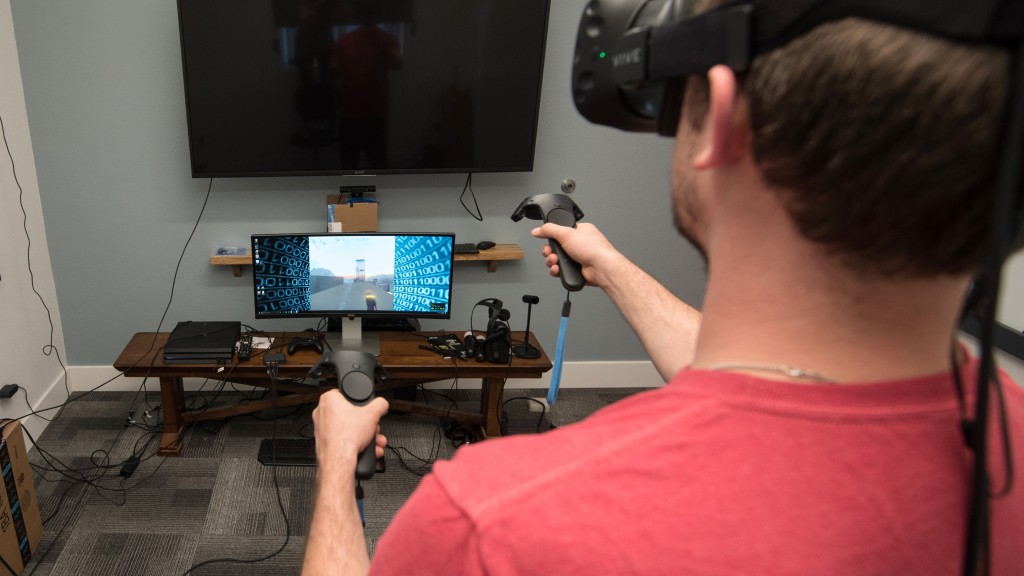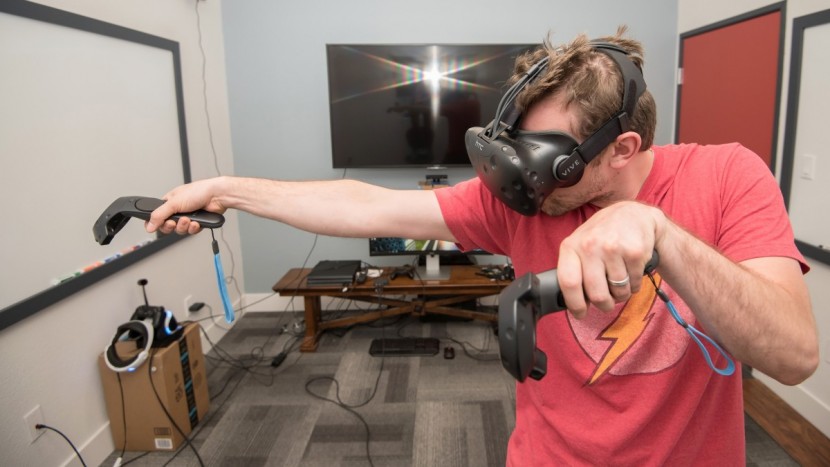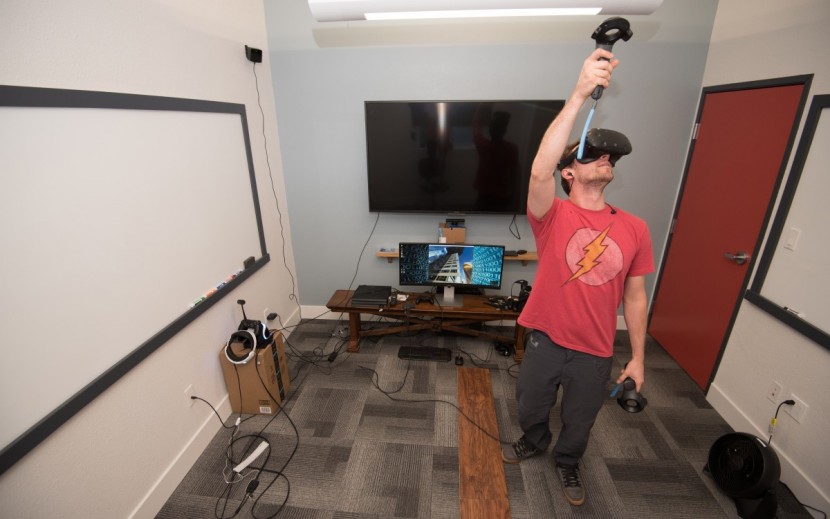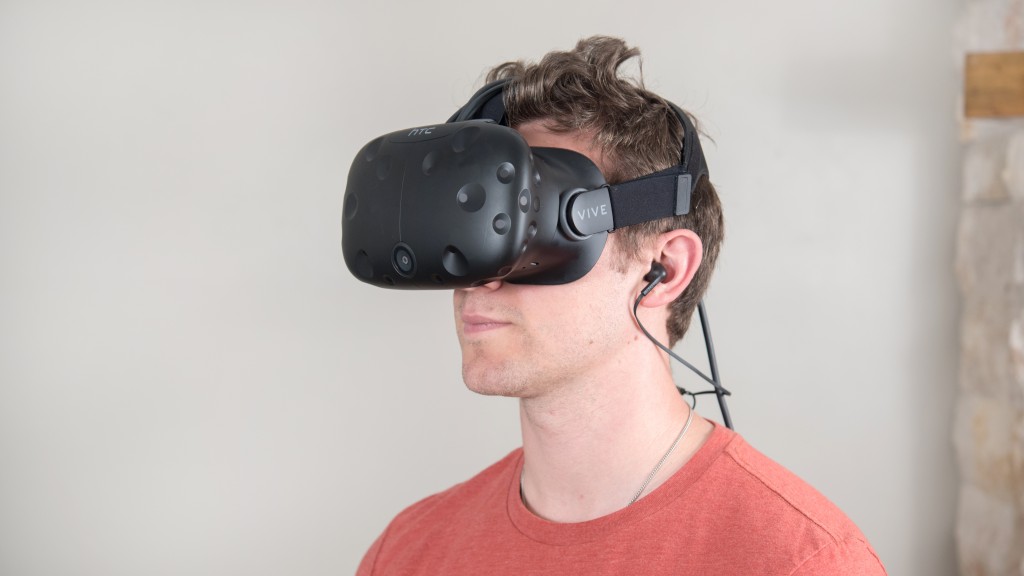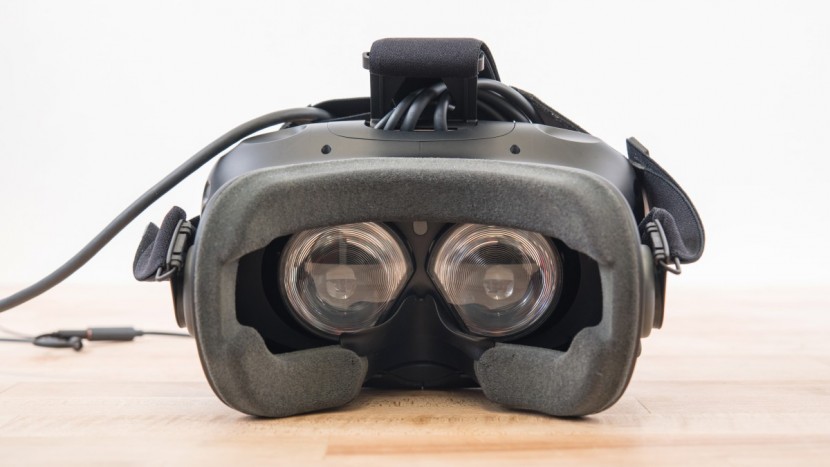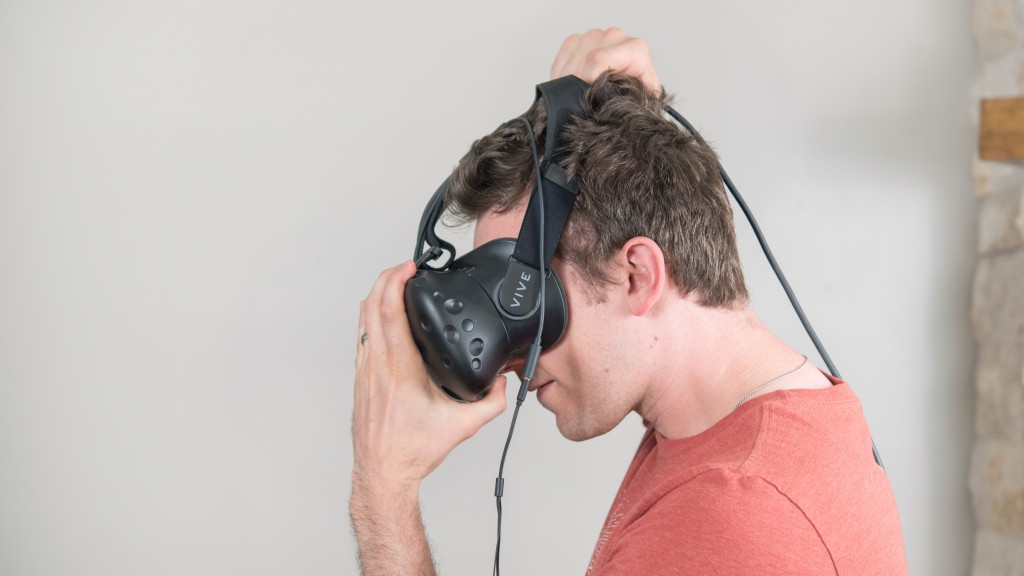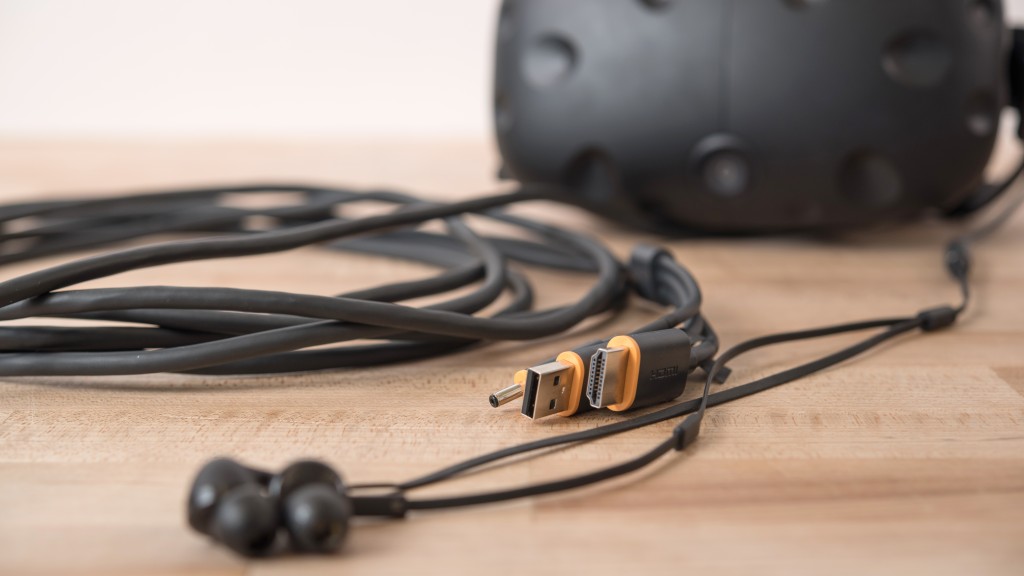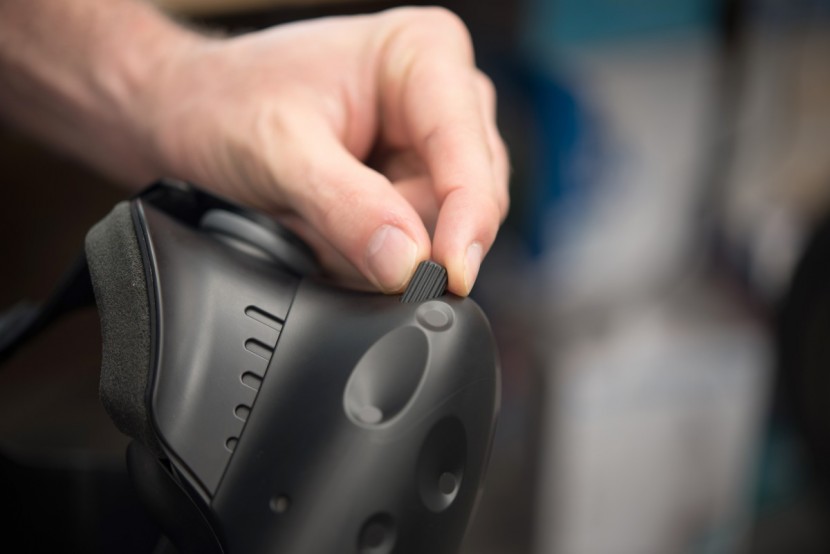HTC Vive Review
Our Verdict
Our Analysis and Test Results
The Vive accurately tracks your movement and is exceptionally comfortable to wear, even for prolonged periods, and is very user-friendly. The initial install can be a bit challenging, but only has to be completed once. Aside from that small setback, this premium headset is definitely worth considering for those that want the best of the best.
Performance Comparison
To find out which VR headset is truly the best that you can currently get, we bought the top models available on the market today and tested them head-to-head. We scored the performance of each headset in our five weighted rating metrics — Interactiveness, Visual Immersiveness, Comfort, User Friendliness, and Ease of Setup — with the following sections providing more detail on how the HTC scored against the rest of the headsets in the bunch.
Interactiveness
One of the cornerstones of a great virtual reality experience is that it is highly interactive. Thus, this metric made up a relatively large portion of the overall score, comprising 35% of the total. We evaluated how you easy it is to interact with each headset and the accuracy of the motion tracking, as well as the range of the external sensors. The HTC Vive scored exceptionally well in this metric, earning the top score of 9 out of 10.
The HTC makes use of two proprietary controllers that are designed specifically for VR. We really liked these controllers, as they have plenty of buttons and are very ergonomic.
You can also use a standard Xbox or PlayStation controller hooked up to the computer that is running the Vive.
The Vive continued to excel in our next test, having the most sensor coverage of the entire bunch. The Vive relies on two external sensors mounted above you to track your motion as you walk around. These sensors adequately covered our entire testing room without leaving any dead spots.
We also found these sensors to be particularly accurate when it came to motion tracking. The motion tracking of the HTC Vive hand controllers is by far the most accurate of the entire group, with the Oculus Rift being a close second. It was also the best by a wide margin for tracking your head and body movement. This margin narrowed when using an additional third sensor with the Oculus, but we still found the accuracy of the Vive to be slightly superior in our tests.
Visual Immersiveness
Ranking next in terms of significance, we judged how visually immersive each product is. The group of tests that make up this metric, responsible for 20% of the overall headset score, include a comparison of the field of view and resolution of each headset and how well each model blocks ambient light, as well as an overall assessment of the viewing quality. Again, the HTC delivered a superb performance, earning an 8 out of 10.
The Vive has one of the highest resolutions of all the models that we tested at 1080x1200 per eye. Continuing a trend, the Vive tied with the Oculus Rift for having the widest field of view at 110°, earning the top score. This makes every VR experience feel exponentially more immersive, as the edge of the image is approximately equivalent to the extent of your peripheral vision, really giving you the feeling that you are actually in the environment of whatever you are watching.
The Vive has overall amazing viewing quality throughout the majority of the available VR games and videos. However, we found that text was not quite as sharp as the Oculus Rift or the PlayStation VR, costing the Vive a few points. Aside from that slight drawback, the Vive definitely gives you one of the most visually immersive experiences available on the market today.
We did find that the Vive does let a little ambient light leak in around your nose in testing, with the amount of light dependent on the shape of your face. However, we never found the light leaking in to be enough to detract from the VR experience.
Comfort
Next up in our review, the Comfort metric accounted for 20% of the final score for each product. We rated each headset on how comfortable it was to wear for long periods of time, whether or not there is sufficient space to wear glasses while wearing the headset, and if there is enough ventilation to keep your face from becoming sweaty after prolonged use and fogging the optic. The HTC again scored very well in this metric, earning a 7 out of 10, though it did get knocked down from the top spot. The following graphic shows how the HTC compared to the rest of the competition.
The HTC is exceptionally comfortable to wear, even for long periods of time. We had a variety of testers with a variety of different sized faces try this headset and none of them reported any significant discomfort. However, we did find that most people slightly preferred the Samsung Gear VR and felt that this product has a slight edge on the Vive when it comes to comfort.
It is possible for a pair of glasses to be worn underneath the HTC, but it is a little tight, especially for spectacles with larger frames. However, the Vive is roomier than the Oculus Rift and is a better option if you do wear glasses.
The Vive is about average when it comes to ventilation, where you may start to feel a little sweaty after prolonged play or on a very warm or humid day, but it is definitely not the norm.
User Friendliness
Our User Friendliness metric ranked next in terms of importance, comprising 10% of the overall score for the Vive. We based the score for this metric on how much work it was to set up the VR headset each time you wanted to use it, how much work it is to connect headphones to the headset, and if it is easy to inadvertently press buttons while using the headset. The HTC again delivered a solid performance, meriting an 8 out of 10, but it wasn't quite good enough to retain the top spot.
It is relatively easy to plug headphones into the Vive, as they attach right to the back of headset, a very accessible spot. However, we did find that it was quite easy to accidentally pull the earbuds out when moving, costing the HTC some points.
The HTC does have side-to-side focal adjustment — a feature that does improve its overall user-friendliness, boosting its score slightly.
The HTC is also extremely easy to get ready to use, booting up automatically as soon as it is within sight of the sensor cubes. The initial setup is a relatively complex process — more on this in the next section. However, once this is done, the Vive is one of the easiest overall to get ready to go.
Ease of Setup
This last metric was actually the first one judged, with the score for each headset based on how difficult the initial setup and unboxing process was. We rated each model on the difficulty of the hardware setup, the software installation, and the amount of additional hardware each product required to run. The HTC is actually one of the most, if not the most, difficult headset to set up initially, earning it a 4 out of 10. You can see how this compared to the rest of the group of products in the following chart.
The hardware setup took us a little over an hour to complete. The two sensors are meant to either be mounted to the top of a tripod or on the wall. As most users will not have a pair of decently tall tripods readily available, mounting the sensors to the wall is the most common option. This is by far the most invasive out of all the sensor mounting methods, as every other model's sensors are simply placed on the table or desk in front of you.
It also took about the same amount of time to install all of the software for the Vive. We also found that the Vive required you to have an external monitor hooked up to your computer, something the Oculus did not. The Vive requires a decently powerful gaming computer to run, on par with the other tethered headsets.
Value
The Vive isn't a great value, offering a premium performance at a premium price.
Conclusion
The Vive is a decently pricey setup that needs a powerful and expensive PC to run properly, but delivered an unmatched performance when it came to providing visually immersive and interactive VR experiences.


